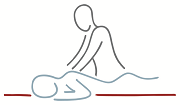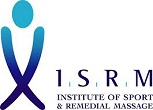“Sports” massage is normally advertised as being useful to athletes and those that like to keep fit and active. It is claimed that therapists can identify and loosen areas of tightness in the tissues and stop the client from developing injuries. Whilst there are differing opinions on whether this is true or not, there is evidence that massage in general can relieve muscle tension, reduce post exercise soreness and help to manage stress. Therefore, many people find that a regular “Sports” massage is beneficial within their training regime and particularly before and after a race or special event.
If you are considering finding a massage therapist to work with you then you may be amazed at how many there are around and may be confused as to what to look for.
Qualification levels in the UK massage industry vary but are usually expressed in levels between 3 and 5. Often this number has an Acronym in front of it signifying the training body that has developed the course. BTEC, ITEC and VTCT are the most common. All have the same criteria and should be equivalent to each other.
My qualification in Soft Tissue Therapy is a B.T.E.C level 5. I also have additional qualifications in Scarwork™, Pregnancy and Oncology Massage.
Here is a quick summary of the different levels available in the U.K –
Level 3 therapists will have learnt the basics of anatomy with a focus on preparing the body for sport, maintenance, and recovering from an event.
Level 4 therapists have received more in-depth training and understand the role that posture and muscular imbalances play. They can also treat common sports conditions.
Level 5 therapists build on their training by learning about a wider range of sports conditions, understanding the role and impact of gait mechanics, the peripheral nervous system and use a range of assessment methods. They learn more about treatment planning and rehabilitation and will probably have learned additional techniques including assisted stretching and home care.
As a personal service, the connection between therapist and client is the most important factor in terms of choosing who to work with, but this information may be of use when compiling a short list. Being a member of the governing bodies S.M.A or I.S.R.M is also a good indicator that the therapist is keeping up to date with their professional development and following established ethical guidelines. I am a member of the I.S.R.M.
If you need any help and advice about the benefits of a treatment and how I can help, please contact me.

